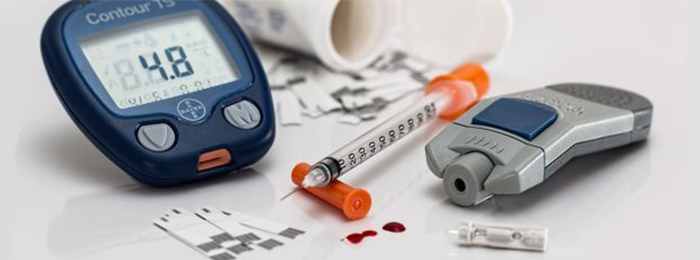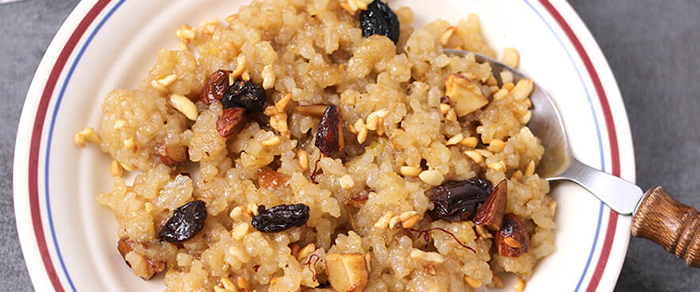How to eat is just as important as what to eat for people with diabetes. Here are all those small blunders that you can correct and get right back on track
It goes without saying that you need to develop a healthy eating plan if you have diabetes (or prediabetes). Your diet must help you to use better the insulin that your body produces, or gets through medication, as well as control blood pressure, blood fats and your weight.
It may come as a surprise, but a diabetes diet is actually a well-balanced and healthy eating plan. It is a diet that should be naturally rich in nutrients, low in fat and calories, high on fruits, vegetables and whole grains. And that makes diabetes diet the best eating plan for everyone.
Your diet, however, may need small tweakings here and there. Here are some pointers to keep in mind. Do consult your doctor if you feel you need to change something and create a healthier eating plan.
GO FOR WHOLE GRAINS
Let’s give the news upfront: whole grains such as brown rice, compared to white rice, can decrease the risk of type 2 diabetes mellitus. At the Madras Diabetes Research Foundation Dr. V. Mohan and colleagues have conducted a wealth of research on how as a nation, Indians are eating too much polished, white rice, and effects of that in increasing risk of diabetes. Indian rice is one of the key reasons behind the spiralling number of diabetes cases in the country.
For your information, there are two types of grains: whole grains, that contain the entire grain (bran, germ and endosperm); and refined grains, that have been ground into white rice or flour in the mills and do not have the bran and the germ. This gives them a white appearance, finer texture and improves their shelf life (good for the manufacturers), but are stripped of all the essential vitamins and minerals, including B-vitamins, iron, and dietary fibre.
Here are some pointers on why you should go for grains:
Go for whole grain, instead of the milled variety. Brown rice and unpolished rice, are chewy, not so white but are much more nutritious. Here’s how brown, unpolished rice is great for people with diabetes:
- Have low glycemic index (the rate at which the body absorbs sugars), release sugar slowly and take longer to digest. As a result, they help to regulate the metabolism and to maintain steady blood sugar levels. Studies have shown that brown rice helps in reducing the risk of type-2 diabetes. Polished rice has a higher glycemic index.
- n Packed with fibre, these varieties of rice keep you full for longer and are great for managing weight.
- A great source of the heart-friendly manganese and help in maintaining healthy cholesterol levels. Polished rice loses half the manganese content.
- Brown rice also contains various essential natural oils. Polished rice loses all those.
TRY PORTION CONTROL
Eat in moderation. That should be your mantra because when you eat extra calories and fat, your body goes through spikes in blood glucose and a host of undesirable consequences as a result.
Here are some tips on how not to overeat:
- Increased portion sizes lead to overeating and unwanted weight gain. And as anyone with diabetes knows, weight loss can make it easier to control blood glucose apart from a host of other health benefits.
- Evidence suggests that sizes of plates, spoons and glasses affect how much we eat. So go for smaller cutlery and crockery
- Use your plate as a portion control guide: half the plate for vegetables or salad; protein (poultry, fish, eggs, dairy, tofu, beans and pulses) in a quarter of the plate; complex carbohydrates like whole grains and starchy vegetables in another quarter of the plate; fatty foods (oil, ghee, butter, cheese) about half a tablespoon.
Start All Meals With a Glass of Water - Drink a glass of water 30 minutes before a meal. It will make you feel less hungry and well-hydrated.
PLAN FOR IDEAL MEALS
Doctors say, breakfast should be heavy, lunch should be moderate, and dinner should be light and early. Here’s how and why:
Here are some thumb rules for eating right:
- People often don’t do justice to their breakfast. But it’s crucial for people with diabetes to eat breakfast. Not having a proper breakfast can lead to erratic blood glucose levels for the rest of the day. It can also increase your risk of heart disease significantly.
- You should have small meals every 3–4 hours. It will keep your metabolism active and stabilise your blood sugar levels. You can eat about six small meals a day, or three full meals with small snacks in between. You should aim not to feel too full nor too hungry.
- Lunch should be a balanced meal, moderately heavy than breakfast. And it should combine all the essential nutrients required for people with diabetes.
- Research shows that diabetes-friendly snacks should not be carb-based but plant-based (for instance, fruits, nuts, plant-based snack bars and salted snacks, cereal or grain-based snacks) that can help promote weight maintenance and healthy glucose management.
- Dinner should be the lightest meal of the day, similar in composition to lunch but with more fibre. Avoid fatty and fried foods. And add some curd on the side, to keep your gut in good shape.
BE REGULAR WITH MEALS
The worst thing you can do to yourself is not eating on time and eating very late. Many people work long hours or spend a lot of time on their daily commute. At work or on the road, they have irregular meal timings or fill up their stomach with junk. By the time they come home, they have very little time or energy to spend on themselves: physical activities, social sports, yoga or even go for walks. They have dinner late and crash on the bed.
Here’s why you should be regular with your meals:
- Remember, prolonged sitting and irregular meals are likely to set you up for obesity, high blood pressure, diseases of the heart and diabetes.
- The best mealtime at night, however, is around 7-8 pm. Ideally, there should be a gap of two-three hours before bedtime.
- Many workplaces now offer food, but usually, they are not healthy. Healthy options like fruits and vegetables are invariably missing. Instead, there is a lot of maida-based, deep-fried food. You have to work out a way to have healthy food and perhaps take your lunch from home.
- Skipping meals to save up on calories can make your blood sugar dip too low. What’s more, you are likely to overeat at the next meal.
COUNT YOUR CARBOHYDRATES
Carbohydrates turn into glucose in your body. Hence, they have the greatest impact on your blood glucose levels. If you are taking insulin, you may need to keep track of the amount of carbohydrate you consume in each meal, snack or drink. This process is called Carb Counting and involves calculating your daily carbohydrate consumption so that you can adjust your dosage and control your blood sugar. Consult your doctor, dietician about Carb Counting.




